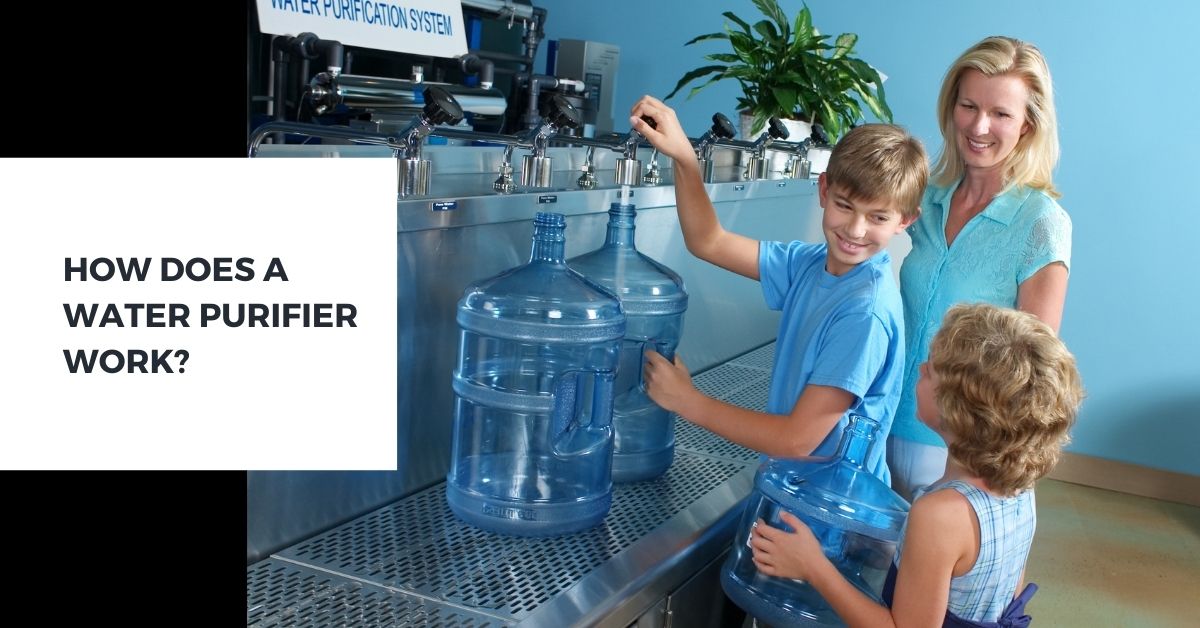Drinking clean and purified water is something that everyone is conscious of. As you all are aware of how drinking pure water has so many benefits on your body, this is something that should not be taken lightly. And one of the best platforms for you to obtain clean water is through water purifiers. When you are aware of what a water purifier is, now it’s time to understand how water purifiers work?
The modern-day water purification systems have been integrated with so many technologies. The technologies are just not for namesake, as the water conditions keep on changing region on region, the water filtration technique gets differed. This is the reason you will find so many types of water purifiers in the market.
Nowadays, water purifiers are not an option but it has been a mandatory system found in every household. Because to get safe water for you and your family members, you need to have a good water purification system installed.
Since the water purifiers kept on trending, consumers developed a curiosity to learn about how these systems work. We present you with the complete guide for how the water purification system works.
How does a water purifier work?
As I mentioned earlier, there are many technologies introduced in water purification systems. Depending upon the type of platform, the purification method gets varied. Below are some of the commonly found water purification processes.
1. Reverse osmosis water purification method
The Reverse Osmosis process is one of the most generally found water purifiers in the market. As it is easy to obtain clean water from the Reverse Osmosis process, it makes it the most preferred choice by many consumers.
Reverse osmosis is also known as RO water purifiers. For this kind of water purifier, the primary source would be groundwater. As you all are aware that groundwater is one of the most common sources available to people. This is the reason the reverse osmosis filtration technique was widely implemented.
The groundwater obtained is passed through at high pressure within the RO water purifier tiny membrane, this helps in eliminating all the bad elements. As the water needs to pass through a thin membrane, it is hard for bad elements to pass through it.
Elements that are filtered in the initial phase can be the Salts and Minerals dissolved in the form of TDS is filtered. This is one of the major processes that the water purifier helps in eliminating almost 90% of bad elements from water. This filtration technique is primarily responsible for protecting you and your family members from water-borne diseases.
2. Ultraviolet filtration process
As the name itself suggests, the water purifiers are integrated with ultraviolet bulbs. These bulbs are emitted on the water which is being passed through the water purifiers. It can be groundwater or any other source of water. The ultraviolet filtration process doesn’t limit to a particular source.
This process is implemented in eliminating all the harmful impurities which are dissolved in water. It is also responsible for eliminating the bad odour and the unfavorable taste that you feel from drinking the water.
The ultraviolet filtration works simultaneously with other methods of purifiers. The common instance can be when the water is getting filtered from a specific process, the ultraviolet sheds light on it that makes the water purely cleansed.
One thing that you need to keep in mind is that ultraviolet filtration doesn’t use any chemicals in purification. This helps in maintaining the same kind of minerals that is present in the water and is not lost by any other means.
How is water filter differentiated over Water purifiers?
The water filters and water purifiers don’t have many differences but it is commonly differentiated on the technology platform. Water filters use the traditional old age practice to filter the water but the water purifiers use electricity in water purification. Below are some of the instances that help you in understanding the process better.
Traditional approach
The water filters are made up of a tube-like structure that is integrated within the container of the filter. When the water is stored in the container, the filtration process gets initiated. You can see the water getting flown from the upper container to the lower container within a few hours.
The process implemented in the traditional filtration approach is very slow and time-consuming. To make it safer, consumers started to boil the water and then use it in the water filter. This made them 100% sure that the water filtered was free from germs.
Futuristic Technology
These are the water filters that are commonly available nowadays in the market. As you can notice that the water filters are referred to as water purifiers with respect to the technology that they have been developed for. Depending upon the type of Technology, water purification comes into action.
The water purifiers have several methods like UF, TDS, MTDS, and MP to compensate for the reverse osmosis and ultraviolet filtration techniques. It is one of the most preferred choices of filtering water as they don’t use any chemicals to clean it.
Usage of chemicals
This filtration practice was used in the olden days, but the usage of chemicals is still an active part of various purifiers. You might have observed that the water that you receive from municipal governing bodies are all treated with chlorine. The chlorine helps in eliminating all the harmful impurities and gets you clean water. But the downside of this process is that it can be a potential threat as they have negative side effects of consuming chlorine water.
There are other chemically reducing agents utilized to eliminate harmful microorganisms. Few of them are even used in the water purification method, this is the reason that you need to be aware of how water purifiers work.
What is Ion exchange filtration technique?
The Ion exchange filtration technique is the process of softening the water. This is done with the help of electrically charged ions that plays a key part in eliminating harmful chemicals from the water.
As you know, there is the presence of harmful compounds like magnesium and calcium. This is usually found in the groundwater which is used for water purification. The ion exchange starts to trap all these compounds by the usage of sodium ions.
The water which is obtained after the Ion-exchange filtration technique is safe for consumption.
Every filtration technique has its own pros and cons. For the ion exchange filter method, you need to frequently recharge the ions after every purification cycle. Recharging of ions can be done with the ingredient provided by the machine.
What is the distillation filtration technique?
The distillation water filtration technique is the process of heating the water at a high temperature to kill all the harmful microorganisms. This helps in separating the bad impurities and gets you only pure water.
The basic process is done with the help of two containers, from which the water is poured into one container and is heated at an extremely high temperature. Because of the heat, the water starts to evaporate and gets transferred to the other container in the form of steam. When the steam gets cooled, the combination of droplets condenses to be a pure form of water.
It also helps in eliminating all the bacterias, viruses, and chemicals that are generally found in the water. The distillation process is used in every type of source. As it is one of the most effective techniques in getting pure water but it isn’t enough. This process isn’t completely successful in removing volatile organic compounds. It needs to be accompanied by other modernized filtration techniques to get absolute clean water.
You can see the distillation process also used in the desalination of seawater. The process is expensive but if you look at it in another few decades, it is going to be a standardized process where you get seawater filtered to drinking water.
Concluding thoughts
You can observe from above, there are different kinds of filtration techniques used in eliminating harmful microorganisms. It is hard to find the system or develop one that eliminates all the harmful impurities through one platform. That is the reason that you notice in the modern-day water purifiers are introduced with several technologies. These features work together to generate clean and safe drinking water.
Whichever water purifier system that you have opted for, you need to ensure that it has been maintained periodically. This helps in increasing the longevity of machines and gets you pure water every time.

